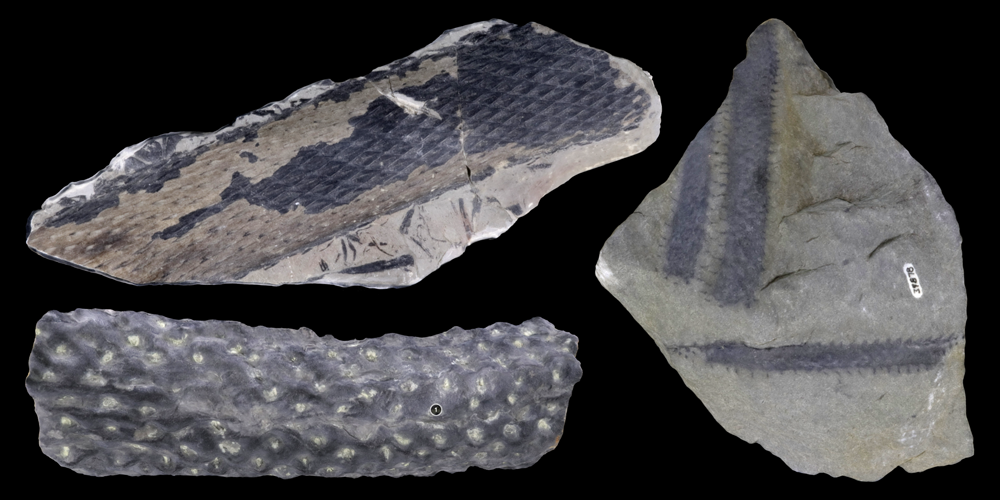This virtual collection was last curated by Elizabeth Hermsen and Jonathan Hendricks on August 16, 2019. Each model is licensed under a Creative Commons Attribution-ShareAlike 4.0 International License. Unless otherwise indicated, each model was created by Emily Hauf using specimens at the Paleontological Research Institution, Ithaca, New York.
Order Lepidodendrales (scale trees)
Stems
Fossil stem of the lycopod Lepidodendron sp. from the Carboniferous of Indiana. Stem shows diamond-shaped leaf bases. Lepidodendron (Lepidodendrales) was a tree-size lycophyte. Specimen is from the Cornell University Paleobotanical Collection (CUPC), Ithaca, New York. Length of specimen is approximately 20 cm (not directly measured).
Rhizomorphs (root-like anchoring structures)
Fossil specimen of the lycophyte (club moss) Stigmaria sp. from the Carboniferous of Morgan County, Tennessee (PRI 50355). Stigmaria is a rhizomorph, or root-like anchoring structure for ancient lycophyte trees. Note the helically arranged, circular rootlet scars. Specimen is on display at the Museum of the Earth, Ithaca, New York. Length of specimen is approximately 26.5 cm.
Fossil specimen of the lycophyte (club moss) Stigmaria sp. from the Carboniferous of Illinois. Stigmaria is a rhizomorph, or root-like anchoring structure for ancient lycophyte trees. Note the helically arranged, circular rootlet scars. Specimen is from the Cornell University Paleobotanical Collection (CUPC), Ithaca, New York. Length of specimen is approximately 18.5 cm. Model by Emily Hauf.
Order Unknown
Family Archaeosigillariaceae
Fossil stems and leaves of the lycopod (club moss) plant Gilboaphyton goldringae from the Devonian of Schoharie County, New York (PRI 49898). Gilboaphyton may have been herbaceous (non-woody). Specimen is on display at the Museum of the Earth, Ithaca, New York. Length of specimen is approximately 15.5 cm.



